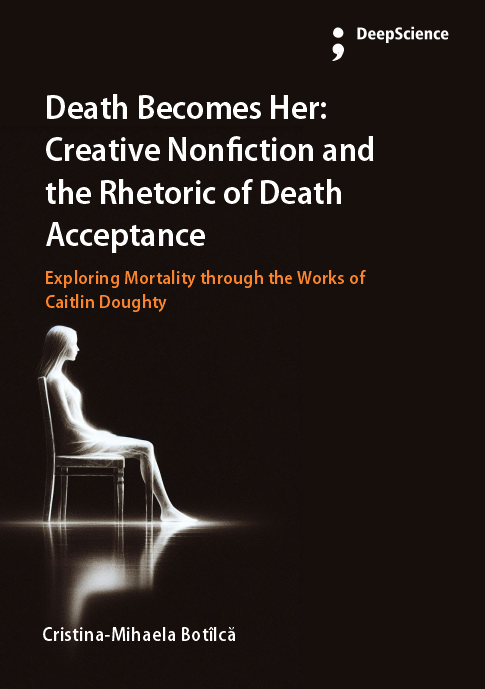Death, humor, and honesty: Storytelling strategies in caitlin doughty’s work
Synopsis
Section 1. Staging Death: The Power of Scenes
1. Scene-by-scene construction
In The Art of Fact, Lounsberry lists creative nonfiction features, and the scene is one of them. “Instead of merely ‘reporting’ or ‘discussing’ an object or event,” she writes, “the artist of nonfiction recasts it in narrative form” (1990: xiv). How the scene is built matters because “the remarkable effect of such transformation is that the moment is reprised: it lives again, yet with the subtle lights and shadings of the author’s vision” (xv). It acquires a “subtle reverberation” (xv) that echoes in the mind’s eye.
Scenes, Gutkind agrees, make up “the creative nonfiction dance” (2012: 138), a block whose components follow a particular pattern within a frame. And because “creative nonfiction is an amalgam of style and substances, information and story” (138), we need such a visual scheme to understand the skeleton of a book or an essay that belongs to this genre. This dance aims to embed information within a scene so that “the movement between blocks is seamless. […] In the perfect world, information will also be embedded inside each scene” (138). Unfortunately, Gutkind’s world does not exist. In reality, scenes are elastic, and sometimes the movement between them is dreary and maybe even hindered by some factors external to the story, such as footnotes.
About the structure of the story, Gutkind makes three points:
(a) The building blocks of creative nonfiction are scenes—little stories;
(b) Information is communicated through action as part of the scene or in between scenes;
(c) Story is the creative vehicle to present the nonfiction. It is a style and substance dance.
One scene should follow another progressively or in a logical pattern, called a frame, the bigger story (the main narrative), comprised of several scenes—like honeycombs in a beehive. In Keep It Real. Everything You Need to Know About Researching and Writing Creative Nonfiction (2008), edited by Gutkind and Fletcher, several authors contributed with chapters about ways to build a scene, immersion, truth, the memoir craze, and influencing readers using ethos, pathos, and logos. It is interesting to see that the existing chapters have not been attributed to certain authors, because the texts have been mixed and mingled by editors, perhaps trying to bring Gutkind’s dance (and my honeycombs image) to life by refusing to hinder the movement from one scene to another. Rubie and Provost (1998) also compare the narrative to a skeleton to which the writer adds muscle and flesh—images and scenes. Hart (2011) discusses scenes too, this time by going backwards to the beginning of the modern era when newer media started incorporating scenes in its content. “The novel […] takes its shape from a series of scenes. A radio drama creates a succession of imagined scenes. The movie is always exclusively scenic” (89). New Journalism was inspired by this and started telling true stories using the same existing building block of scenes, with Wolfe calling it “scene-by-scene construction” (1973: 31).












